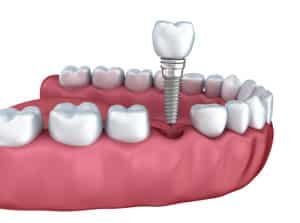 If you’re missing a tooth or facing an extraction, you may be thinking about restoring your teeth with dental implants – they have become an increasingly popular choice for tooth restoration (for good reason, too). There are several benefits to replacing your lost teeth with an implant (over other options); from strength and function to cosmetic appeal and longevity. However, restoring your smile isn’t always as easy as choosing an option and undergoing the procedure. For example, in this case, for dental implants to be successful, your dentist has to consider several different factors about your oral health and commitment, medical (and family) history, and so on.
If you’re missing a tooth or facing an extraction, you may be thinking about restoring your teeth with dental implants – they have become an increasingly popular choice for tooth restoration (for good reason, too). There are several benefits to replacing your lost teeth with an implant (over other options); from strength and function to cosmetic appeal and longevity. However, restoring your smile isn’t always as easy as choosing an option and undergoing the procedure. For example, in this case, for dental implants to be successful, your dentist has to consider several different factors about your oral health and commitment, medical (and family) history, and so on.
How Dental Implants Work
There are three parts to a dental implant; the post (made of titanium), the abutment, and the crown. The abutment connects the dental crown to the implant post, making for a natural appearance.
Initially, you’ll undergo minor oral surgery when the post is placed into your gum tissue – but don’t worry, you won’t feel a thing! Afterwards, your dentist will likely recommend a soft diet and cold compress (among others) to make your recovery as comfortable as possible.
Once the implant is placed, the titanium post and your jawbone undergo a process known as osseointegration. Since titanium is a biocompatible material, it’s able to physically fuse with our bone – although this process takes roughly 3 to 6 months. Then, your crown is placed and it’s complete! Your new tooth will blend seamlessly with your natural teeth.







